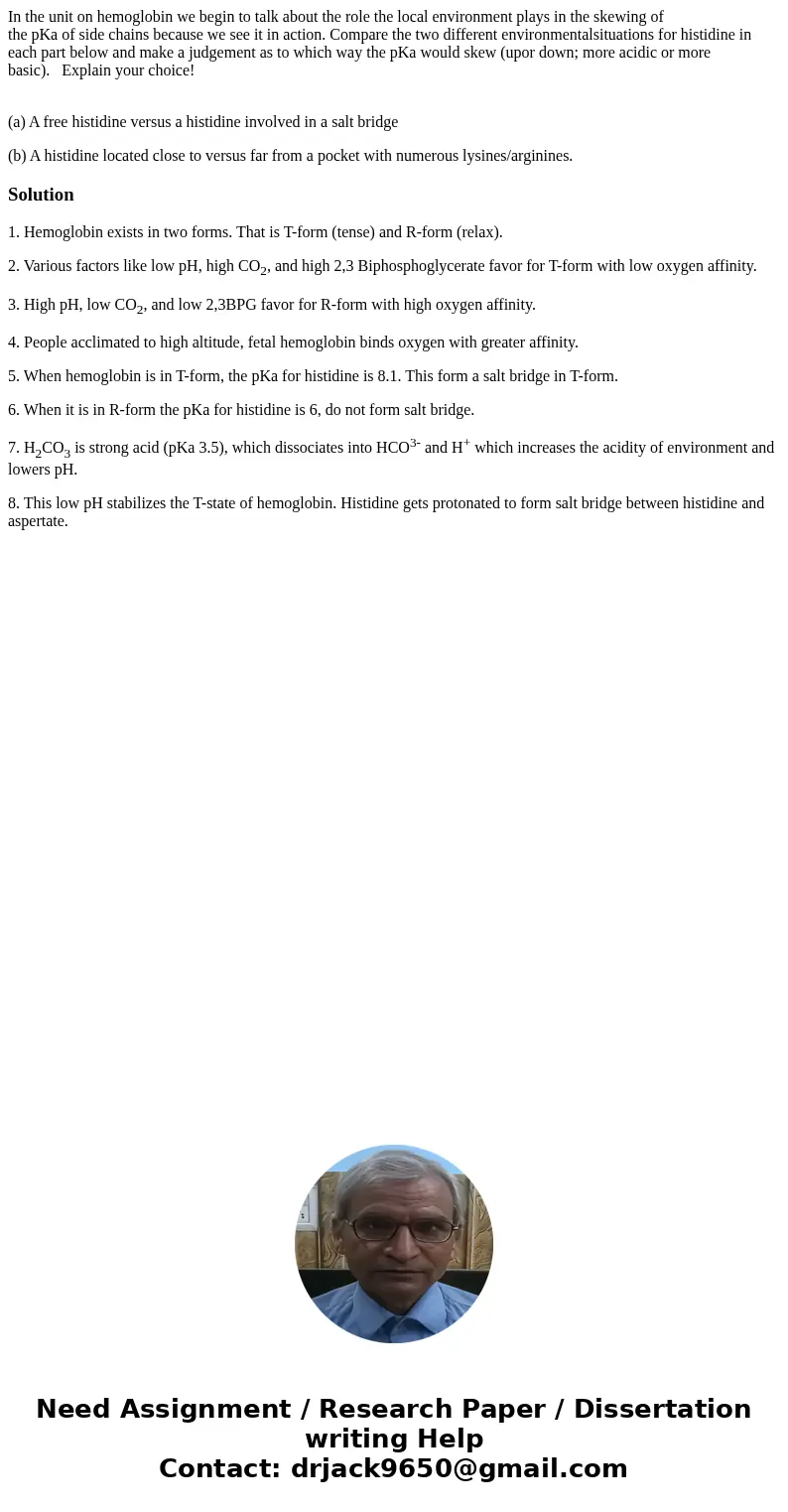In the unit on hemoglobin we begin to talk about the role th
In the unit on hemoglobin we begin to talk about the role the local environment plays in the skewing of
the pKa of side chains because we see it in action. Compare the two different environmentalsituations for histidine in each part below and make a judgement as to which way the pKa would skew (upor down; more acidic or more basic). Explain your choice!
(a) A free histidine versus a histidine involved in a salt bridge
(b) A histidine located close to versus far from a pocket with numerous lysines/arginines.
Solution
1. Hemoglobin exists in two forms. That is T-form (tense) and R-form (relax).
2. Various factors like low pH, high CO2, and high 2,3 Biphosphoglycerate favor for T-form with low oxygen affinity.
3. High pH, low CO2, and low 2,3BPG favor for R-form with high oxygen affinity.
4. People acclimated to high altitude, fetal hemoglobin binds oxygen with greater affinity.
5. When hemoglobin is in T-form, the pKa for histidine is 8.1. This form a salt bridge in T-form.
6. When it is in R-form the pKa for histidine is 6, do not form salt bridge.
7. H2CO3 is strong acid (pKa 3.5), which dissociates into HCO3- and H+ which increases the acidity of environment and lowers pH.
8. This low pH stabilizes the T-state of hemoglobin. Histidine gets protonated to form salt bridge between histidine and aspertate.

 Homework Sourse
Homework Sourse